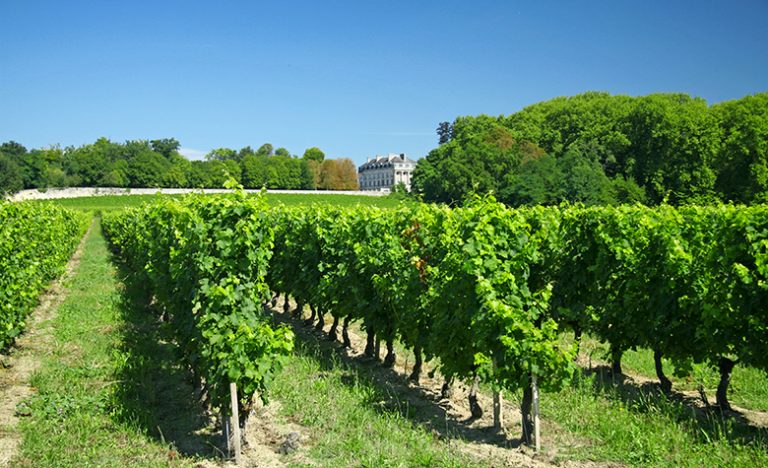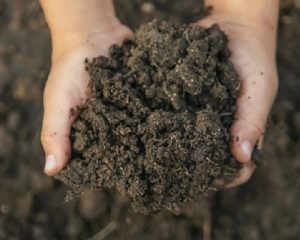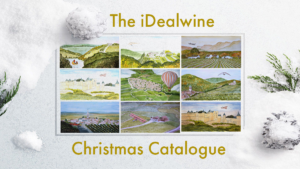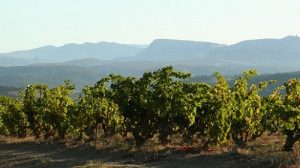
For some, the mere mention of “Bordeaux” – a little like “Champagne” – is simply a mark of quality, rather than the symbol of a patchwork of very different terroirs. Yet Bordeaux (and all the great French winemaking regions for that matter) is divided into large areas with widely-varying profiles.
Generally speaking, the basic Bordeaux knowledge of most wine enthusiasts is that the region has a left bank, a right bank, and something not so well-known in between the Garonne and the Dordogne. If we take it a little further, many are aware that a majority of Cabernet Sauvignon is used on the Left Bank, and mostly Merlot on the Right Bank. Of the middle part, known as “Entre-deux-Mers” by experts, we know almost nothing: which grape varieties, and what type of wines are produced there?
We’re going to delve a little deeper here and attempt to define what sets each different Bordelais terroir apart, dividing the region into three large areas: the Médoc and Graves (Left Bank), the Libourne region and neighbouring areas (Right Bank) and the Entre-deux-Mers.
Médoc and Graves
There is a certain geological continuity on the left bank of the Garonne and the Gironde estuary, with soils of gravel (small pebbles or stones) of varying thickness, a result of the Pyrenees’ erosion by the Garonne (and in the Médoc, the Massif Central by the Dordogne). These soils, made up of pebbles, gravel and sand from the interglacial periods, are very well-draining and have a great ability to retain heat, helping to ripen the grapes. The stone pebbles in fact absorb the heat during the daytime and slowly release it during the cool nights. The considerable water surface made up by the Gironde allows to temper harsh winters.
The fairly flat terrain of the Left Bank (which ‘peaks’ at less than 50 metres) require soil drainage by a network of underground drains. In the 17th century, these were made of hollowed-out pine trees, whereas now synthetic materials are used.
We can identify three nuances in terroir on the Left Bank:
- The Médoc is mostly gravelly in the Haut-Médoc, particularly in the appellations Margaux, Saint-Julien, Pauillac and Saint-Estèphe. The crus classés are located on hilltops, small hills separated by small streams of water perpendicular to the Gironde which have, over the millenaries, filled up with sand and sediment less adapted to vine-growing. The hilltops are made up of pebbles and gravel cemented by clay-rich sands, getting richer and richer in clay from the south to the north. Although the slopes are not very steep, they do get better sunlight and the soils drain well.
- The Sauternes area lies on fossil-rich limestone, largely covered by Quarternary alluvial deposits which form lightly-sloping terraces. Barsac, a flatter area, is an exception, as the soil is peppered by limestone due to erosion (which is why the Sauternes produced here can take the Barsac appellation, though this is by no means compulsory).
- The Graves area is named after the dominant soil type, gravel. These deposits of gravel and pebble, often mixed with sand and clay, are deposited by the Garonne. They form a gently-sloping succession of terraces, which increase in age as they get further away from the river. Like in the Médoc, valleys have formed, creating several hilltops. The north of this area is of higher quality than the south, with incredibly rich gravel (quartz, flint, quartzites). The Pessac-Léognan appellation is located to the north of the region, and even within the appellation, the finest domains (including Château Haut-Brion) can be found in its northern tip, touching the city of Bordeaux.
Cabernet Sauvignon is king in most of these terroirs. A late-ripening variety producing small, thick-skinned grapes, it is particularly well-adapted to the gravelly, hot and dry soils of the Left Bank. To the north of the Médoc, on soils which are richer in clay (such as Saint-Estèphe), Merlot is much more present, and sometimes even dominates blends.
Libourne and neighbouring areas
The notoriety of the Right Bank is essentially linked to two ‘star’ appellations: Saint-Emilion and Pomerol. But it includes many others, such as Saint-Emilion’s satellite appellations, Fronsac, Canon-Fronsac and all the Côtes de Bordeaux appellations with their offshoots (Castillon, Francs, Blaye, etc.). There is thus a rather wide variety of terroirs, although a certain number of characteristics are common to the region. These include a wide array of soil compositions caused by the erosion of different bedrocks (clay, limestone, sand and some gravel). Made up of particularly fine particles, these soils can easily retain rainwater, helping to cool the vines. They are generally situated on hillsides and therefore have good draining capacity. And now for the nuances:
- Saint-Emilion and its satellites (Montagne, Puisseguin and Lussac) are part of a geological continuity of a mound of molasse with a top cornice of limestone, from Sainte-Foy to the east up to the border with Charente-Maritime and Blaye in the west. This continuity is sometimes interrupted by valleys, such as in Côtes de Castillon. This geological unity explains why, in the past, most of the wines produced between Castillon and Pomerol were called Saint-Emilion. Saint-Emilion is particularly marked by fossil-rich limestone. On the slopes which lead down to the Dordogne (to the south of the town), where several very high-quality châteaux are based (Ausone, Bélair, La Gaffelière, Pavie), stones, molasse and sands form very well-draining soils on steep slopes, conditions which are particularly propitious to vine-growing. While Merlot dominates, Cabernet Franc – which is particularly well-adapted to limestone terroirs (such as in the Loire Valley, particularly Saumur-Champigny) – produces excellent wines. Some flagship châteaux even produce cuvées in which Cabernet Franc is the dominant variety of the blend, such as Ausone, Cheval Blanc, Angélus, Clos Saint-Julien, and Petit Gravet Aîné.
- Pomerol is spread over the ridge of the Saint-Emilion plateau. On the Fronsac molasses, there are deep deposits of sand, gravel, pebbles and clay, with a deposit of clay between Petrus and Certan. Generally-speaking, the terroir is more varied than the Saint-Emilion region. It is made up of three different parts. To the west, deep brown soils of coarse sand and gravel with high porosity. The vine has to dig deep into the soil so that the roots can access the water. These wines are generally rather light and don’t have great aging potential. In the south of the appellation, the surface is made up of grey sand on iron concretions locally known as “crasse de fer” (ferruginous sandstone). The finest quality of Pomerol is in the centre of the appellation, around the church. The terroir is made up of a mix of gravel and clay. This is one of the areas which is highest in clay in the entire Bordeaux region. The soil type gives unique character to the wines it produces, which are for the most part made up of Merlot.
- Canon-Fronsac and Fronsac have a terroir which is very similar to that of Saint-Emilion, with a slightly thinner layer of limestone. Fronsac’s terroir is less homogenous and produces wines with less character than its immediate neighbours, except those which come from the limestone plateau of molassic slopes.
- Côtes de Bourg is composed of three lines of hills parallel to the Dordogne and the Gironde. They all face very different directions, with a solid subsoil of limestone. To the west, the limestone is covered with thin silt; in the centre, a combination of clay and gravel and to the east, gravelly sands, such as in the nearby Blaye appellation. The wines are rather full-bodied, with character and marked tannins.
- Blaye is divided into two parts. The south-east is essentially clay-limestone, with a majority of limestone and produces rather light reds, whereas the north-west, with silica, sand, gravel and poor soils, is geared to producing white wines.
Entre-deux-Mers
In light of the Left and Right Bank appellations, the Entre-deux-Mers is undeniably the ‘poor cousin’ of Bordeaux. The region in fact suffers economically, very far from the glamour of the region’s grands crus… Its name comes from the two rivers which surround it, the Dordogne to the north and the Gironde to the south. This region produces, in terms of red wines, a majority of generic Bordeaux wines or under the Premières Côtes de Bordeaux appellation, whereas the white wines are produced with the Entre-deux-Mers appellation, which causes much confusion, as consumers can tend to think that the area solely produces white wines! The south of the appellation is specialised in sweet wines (Loupiac, Sainte-Croix du Mont and Cadillac).
As far as terroir is concerned, there is great diversity, with limestone (particularly towards the Dordogne), clay-rich areas (to the north-west of the region), and gravelly areas, in the Graves de Vayres appellation to the north of the Entre-deux-Mers.
To see for yourself how all these features affect their wine, check out our extensive selection of Bordeaux wines.



